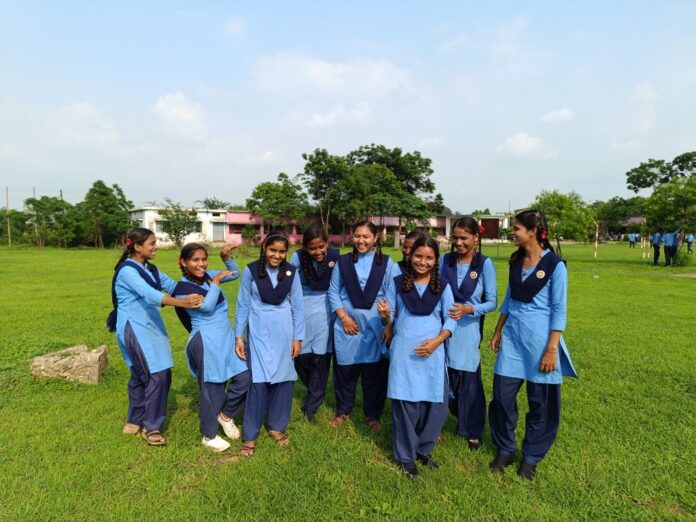Learning poverty is fast increasing among kids in the age group of 5-16 years
ASER report reveals for the first time how the Covid-19 pandemic affected learning among schoolchildren
Learning poverty is fast increasing among our children in the schooling age group. The basic ability of young children to read text dropped to the lowest level since 2012, and for them to complete arithmetic problems to levels last seen in 2014, the latest Annual Status of Education Report (ASER) has found, detailing for the first time how the Covid-19 pandemic affected learning among schoolchildren.
ASER, which provides a snapshot of schooling in rural India focused on the children in the age group of 5-16 years . The report — the survey is usually done once in two years — this year offers the first comparison of learning outcomes from a pre-pandemic period (2018) with how students fared after the two years of heavy Covid-19-related disruptions, which led to education moving online and out of reach for many with limited financial resources.
“Nationally, children’s basic reading ability has dropped to pre-2012 levels, reversing the slow improvement achieved in the intervening years,” said the report, released on Wednesday.
The assessment, by Pratham Foundation, covers children the in age group of 5-16 years, enrolled in both government and private schools across the country. In all groups, there was a sharp drop in learning levels.
The last routine assessment, in 2020, was not done in a regular manner due to the pandemic and the foundation released a report in 2021 looking at some of the other aspects it covers. The 2021 report was notable for finding that the pandemic appeared to have led to a large shift in students form private schools to government-run institutions.
For the latest study, close to 700,000 children from 374,544 households in 19,060 villages across 616 districts were covered in field visits.
The 2022 assessment found that the overall enrolment in schools across the country increased at all levels compared to 2018, with 98.4% in the age group of 6-14 years currently enrolled, compared to 97.2% four years ago.
The report also highlighted a decrease in the proportion of out-of-school girls across the country, and a sharp increase of 7.1 percentage points in the number of children enrolled in pre-primary age groups in 2022, in comparison to 2018.
According to the report, the percentage of Class 3 students in both government and private schools who can read text given to second graders dropped from 27.3% in 2018 to 20.5% in 2022. The last time this proportion was close to this low was in 2012, at 21.5%.
For basic calculations, third graders who could solve a math question given to second graders dropped to 25.9% from 28.2%. This number was 25.4% in 2016, the last time the proportion was lower.
Among the states showing a decline of more than 10 percentage points in basic reading abilities, from 2018 levels, were Kerala (from 52.1% in 2018 to 38.7% in 2022), Himachal Pradesh (from 47.7% to 28.4%), and Haryana (from 46.4% to 31.5%). Large drops were also visible in Andhra Pradesh (from 22.6% to 10.3%) and Telangana (from 18.1% to 5.2%), the report highlighted.
The ASER reading test assesses whether a child can read letters, words, a simple paragraph of first grade level or a story of second grade level of difficulty. In the case of fifth graders, the proportion of children who could at least read Class 2-level text fell from 50.5% in 2018 to 42.8% in 2022. Forty-two per cent of children in the age group of 14 to 18 years in rural India cannot read easy sentences in English, while more than half of them struggle with simple division problems.
The annual report of ASER published by the Pratham Foundation also found that more than half of the students in this age group struggle with division problems. “About 25 pc of this age group still cannot read a class 2 level text fluently in their regional language. More than half struggle with division (3-digit by 1-digit) problems. Only 43.3 pc of 14-18-year olds are able to do such problems correctly. This skill is usually expected in class 3 and 4.
According to the report, low levels of foundational numeracy affect the ability of youth in tackling everyday calculations where they need to apply measurement or use the unitary method in practical situations, or even do simple financial computations (managing a budget, applying a discount or calculating interest rates or repayment of a loan.
“Catch up efforts for foundational literacy and numeracy are needed for a significant portion of the 14-18 population, not only for doing better in school but also for everyday needs. Data from ASER 2023 indicates that building foundational literacy and numeracy may be needed for about a fourth of youth in the 14-18 age group.
“A little over half can read sentences in English (57.3). Of those who can read sentences in English, almost three quarters can tell their meanings (73.5 pc),” the report said. Terming the drop in reading abilities as “huge”, director of ASER Centre, Wilima Wadhwa said: “This fall is a huge drop, given how slowly the all-India numbers move, and confirms fears of large learning losses caused by the pandemic.”
In terms of English reading skills, the report highlighted that only one out of four children in Class 5 and almost half the children in Class 3 in India could read simple English sentences, with more such students being found in private schools as compared to government school.
“Out of those who can read sentences, 62.3% can comprehend their meanings… Massive variations can be seen by state, with many northern and north-eastern states performing better than others,” the report highlighted.


